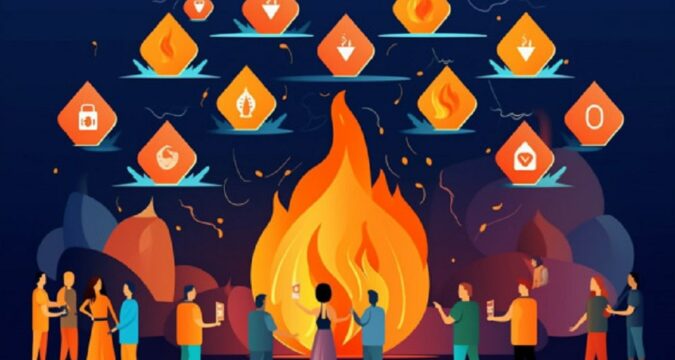
One of the top global crypto exchanges, KuCoin, recently announced its support for Terra Classic’s LUNC burn tax program. Based on the new policy, the existing tax burn rate will be phased out and replaced by a 0.5% burn at block height 12,902,399.
Support For Terra Classic Network Upgrade
Implementing the new order on KuCoin will take effect immediately. Interestingly, this development follows closely after Binance, the largest crypto exchange, announced its backing of Terra Classic’s recent substantial network upgrade.
This upgrade successfully aligns the Terra Classic blockchain with LUNA 2.0 and other blockchains operating on the Cosmos protocol. In a notable change, the burn’s tax, previously set at a mere 0.2%, is now poised to experience a surge of 150%.
The recent development has captured the attention of crypto enthusiasts on Twitter, who are eager to assess the potential impact of this new rule, set to be effective May 23, 2023. With the implementation of an advanced burning mechanism, the primary objective is to reduce the circulating supply of the struggling altcoin significantly.
Activating the 0.5% tax burn within four days will accelerate the Terra Luna Classic (LUNC) burn mechanism, significantly impacting the USTC plan. Additionally, the increased burning of $LUNC tokens will pave the way for the expansion of the USTC staking vault.
Furthermore, the increased burn tax coincides with the LUNC community’s dedication to revitalizing their ecosystem through exciting initiatives such as an upcoming RPG and AI app chain. This move has also caused an impressive surge in staking activity, hitting a new all-time high.
With a staggering stake of over $1 billion worth of LUNC tokens, it is evident that the community continues to thrive, displaying remarkable resilience even in the aftermath of the most severe debacle in the crypto space.
What Is Driving The Burn Narrative?
Following the May 2022 spectacular collapse of the Terra ecosystem due to the massive liquidation of its stablecoin (TerraUSD) and native token (LUNA), the broader crypto industry went into a panic. In the aftermath of the Terra protocol incident, affected individuals diligently sought avenues for survival.
One such avenue was forming distinct communities united by the common objective of revitalizing the network. Within these communities, an initiative to actively participate in the burning of LUNC tokens emerged.7; thus, contributing towards the network’s recovery.
Cryptocurrency burning revolves around the fundamental concept of eliminating tokens from circulation. The supply is effectively reduced by securely transferring digital assets to unrecoverable wallets.
Therefore, a decrease in supply naturally increases the cryptocurrency’s price, creating a positive correlation between scarcity and value. Furthermore, volunteer developers (Terra Rebels) in the Terra community started revival attempts of the embattled crypto asset after the founder, Do Kwon, and the parent company, TerraForm Labs, neglected the network.
The group’s primary objective was to breathe new life into the Terra Classic ecosystem and establish independence from TerraForm Labs. The primary focus of their mission was providing essential software clients to the community and validators.




